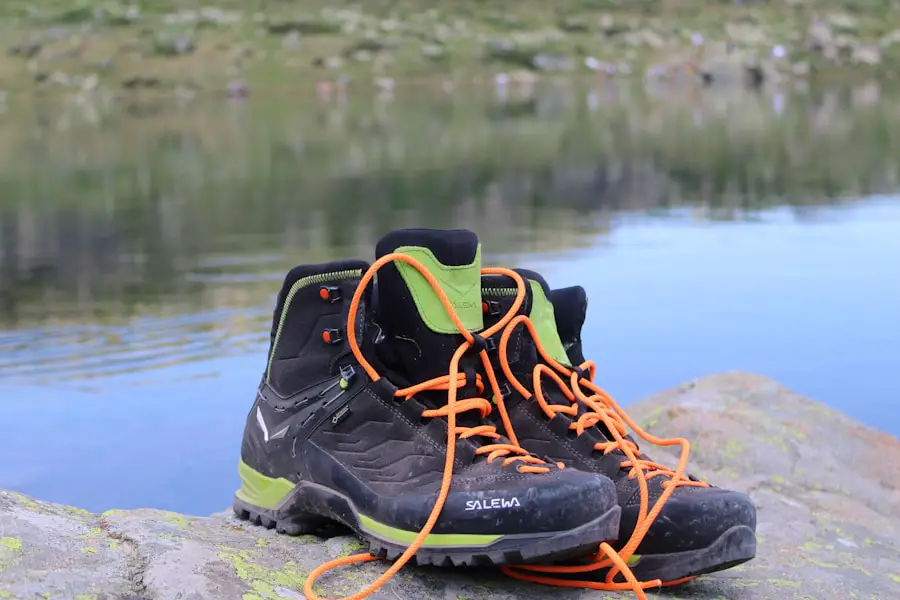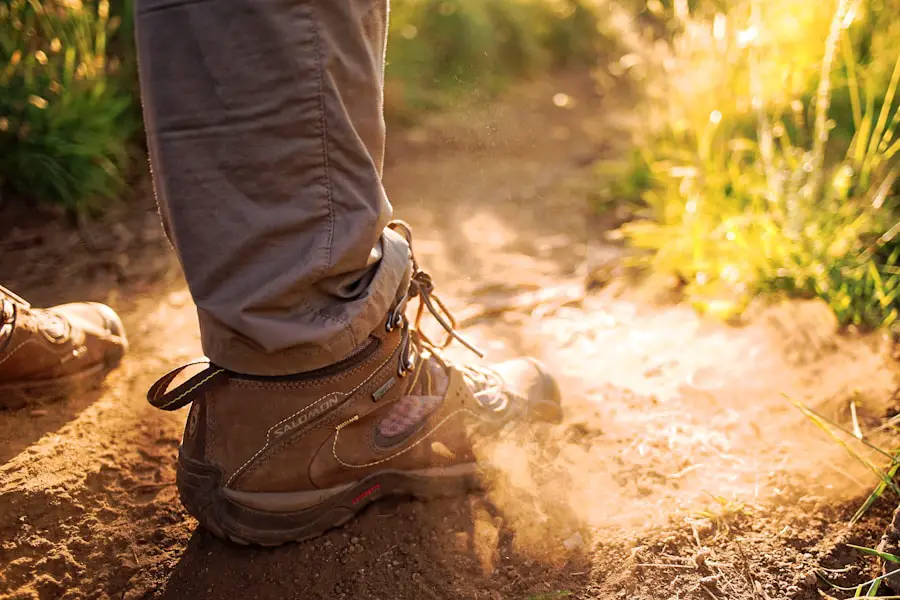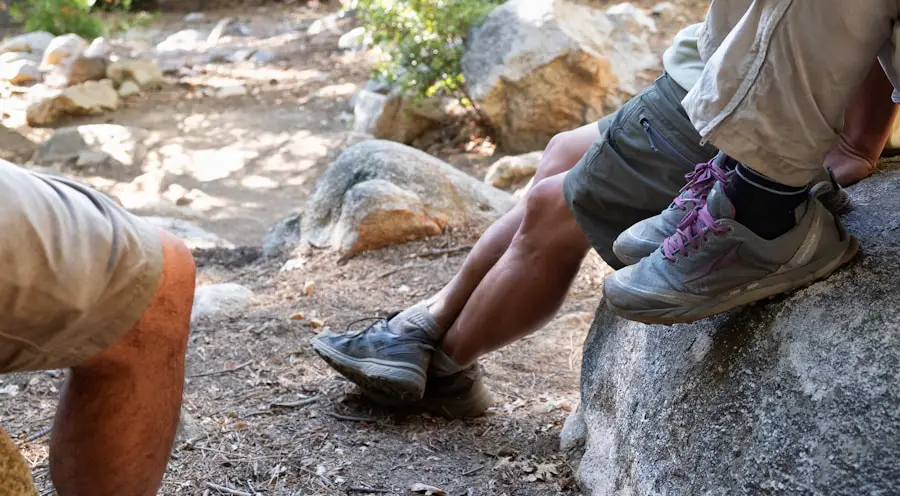Blisters are small pockets of fluid that form between the layers of skin, often as a result of friction, heat, or irritation. They can occur on any part of the body but are most commonly found on the feet, especially during activities that involve prolonged walking or running. The primary cause of blisters is friction, which can arise from ill-fitting shoes, excessive moisture, or repetitive movements.
When the skin is subjected to constant rubbing, the outer layer begins to separate from the underlying layers, leading to the accumulation of fluid in the space created. This fluid-filled sac serves as a protective barrier, allowing the underlying skin to heal. In addition to friction, other factors can contribute to blister formation.
Heat is another significant factor; when the skin becomes too warm, it can lead to increased perspiration and moisture accumulation. This moisture can weaken the skin’s integrity, making it more susceptible to damage from friction. Furthermore, certain medical conditions, such as eczema or psoriasis, can compromise the skin’s barrier function, increasing the likelihood of blister development.
Understanding these causes is crucial for anyone who engages in activities that put their feet at risk, as it allows for proactive measures to be taken to prevent blisters from forming.
Key Takeaways
- Friction and moisture are the main causes of blisters, so it’s important to take steps to prevent these factors.
- Choosing the right footwear that fits well and provides proper support is crucial in preventing blisters.
- Proper sock selection, including moisture-wicking and seamless options, can greatly reduce the risk of blisters.
- Conditioning and caring for your feet before a hike, including trimming toenails and using moisturizer, can help prevent blisters.
- Techniques such as using lubricants and wearing moisture-wicking clothing can help prevent friction and reduce the risk of blisters.
Choosing the Right Footwear
Selecting appropriate footwear is one of the most critical steps in preventing blisters. Shoes that fit well and provide adequate support can significantly reduce the risk of friction and irritation. When choosing shoes for activities such as hiking or running, it is essential to consider not only the size but also the shape and design of the shoe.
A shoe that is too tight can create pressure points, while one that is too loose may allow for excessive movement of the foot within the shoe, both of which can lead to blister formation. It is advisable to try on shoes at the end of the day when feet are slightly swollen to ensure a proper fit. Moreover, different activities require different types of footwear.
For instance, hiking shoes should have a sturdy sole and good traction to navigate uneven terrain, while running shoes should offer cushioning and support for forward motion. Additionally, materials play a significant role in comfort; breathable fabrics can help wick moisture away from the foot, reducing the likelihood of blisters caused by sweat. Investing in high-quality footwear designed for specific activities not only enhances performance but also minimizes the risk of developing painful blisters.
Socks Matter: The Importance of Proper Sock Selection

While footwear is crucial in blister prevention, socks are equally important and often overlooked. The right socks can provide an additional layer of protection against friction and moisture. When selecting socks for physical activities, it is essential to choose those made from moisture-wicking materials such as merino wool or synthetic blends.
These fabrics help draw sweat away from the skin, keeping feet dry and reducing the risk of blisters caused by dampness. Cotton socks, while comfortable for casual wear, tend to retain moisture and can lead to increased friction against the skin. Additionally, sock thickness and fit should be considered.
Some individuals may benefit from thicker socks that provide extra cushioning and reduce direct contact between the foot and shoe. However, overly thick socks can also lead to a tighter fit within the shoe, potentially causing pressure points. It is often beneficial to experiment with different sock types and thicknesses to find what works best for individual foot shape and activity level.
Seamless socks or those with flat seams can also minimize irritation caused by traditional sock seams rubbing against the skin.
Preparing Your Feet: Tips for Conditioning and Care
| Conditioning and Care Tips for Feet | Benefits |
|---|---|
| Regularly washing and drying feet | Prevents bacterial and fungal infections |
| Trimming toenails straight across | Reduces the risk of ingrown toenails |
| Wearing properly fitting shoes | Prevents blisters, calluses, and bunions |
| Moisturizing dry skin on feet | Prevents cracking and discomfort |
| Regularly performing foot exercises | Strengthens muscles and improves flexibility |
Conditioning your feet is an essential aspect of blister prevention that is often neglected. Just as athletes train their muscles for endurance and strength, feet also require preparation for prolonged activity. Gradually increasing activity levels allows the skin on your feet to adapt to stressors over time.
For instance, if you plan on hiking a long trail, start with shorter hikes and progressively increase your distance. This gradual exposure helps toughen the skin and reduces the likelihood of blisters forming during more strenuous activities. In addition to gradual conditioning, regular foot care is vital for maintaining skin health.
Keeping feet clean and dry is fundamental; washing them daily with mild soap and ensuring they are thoroughly dried afterward can help prevent moisture-related issues. Regularly inspecting your feet for any signs of irritation or damage allows for early intervention before blisters develop. Applying a good moisturizer can help keep the skin supple and prevent cracking, which can also lead to blister formation.
Furthermore, consider using foot powders or anti-chafing balms before engaging in activities that may cause friction; these products create a protective barrier that reduces irritation.
Techniques for Preventing Friction
Preventing friction is key to avoiding blisters during physical activities. One effective technique is to use blister prevention products such as adhesive pads or blister prevention tape on areas prone to friction. These products act as a barrier between the skin and shoe, significantly reducing direct contact and minimizing irritation.
They are particularly useful for individuals who know they have specific hotspots on their feet where blisters are likely to form. Another technique involves adjusting lacing techniques on shoes to ensure a snug fit without causing pressure points. For example, using a heel lock lacing method can help secure the heel in place and prevent excessive movement within the shoe.
Additionally, ensuring that shoelaces are neither too tight nor too loose is crucial; overly tight laces can create pressure points while loose laces may allow for unnecessary foot movement that leads to friction. Experimenting with different lacing patterns can help find a balance that provides both comfort and security during activities.
Dealing with Hotspots: Early Intervention Strategies

Hotspots are areas on the skin that feel irritated or tender and are often precursors to blister formation. Recognizing these early signs is crucial for preventing full-blown blisters from developing. If you notice a hotspot during an activity, it’s essential to take immediate action rather than pushing through discomfort.
One effective strategy is to stop and assess the situation; removing your shoes and socks allows you to inspect your feet closely for any signs of redness or swelling. Applying blister prevention products at this stage can be highly beneficial. Using moleskin or blister pads directly on the hotspot can provide immediate relief by cushioning the area and reducing friction against footwear.
If you have access to anti-chafing balms or creams, applying these products can also help soothe irritated skin and create a protective barrier against further friction. In some cases, simply adjusting your footwear or lacing technique may alleviate pressure on the hotspot, allowing you to continue your activity without further discomfort.
The Role of Hydration and Nutrition in Blister Prevention
While hydration and nutrition may not seem directly related to blister prevention, they play a significant role in overall skin health and performance during physical activities. Staying well-hydrated helps maintain skin elasticity and resilience; dehydrated skin is more prone to cracking and irritation, which can lead to blisters. During prolonged activities such as hiking or running, it’s essential to drink water regularly to replenish lost fluids and maintain optimal hydration levels.
Nutrition also contributes to skin health; a balanced diet rich in vitamins A, C, E, and zinc supports skin repair and regeneration processes. Foods such as fruits, vegetables, nuts, and whole grains provide essential nutrients that promote healthy skin function. Additionally, incorporating omega-3 fatty acids found in fish or flaxseeds can help maintain skin hydration levels by supporting cell membrane integrity.
By prioritizing hydration and nutrition, individuals can enhance their overall resilience against blister formation during physical activities.
Post-Hike Foot Care: Treating Blisters and Preventing Infection
After a long hike or physical activity, proper post-hike foot care is essential for treating any blisters that may have formed and preventing infection. If a blister has developed but remains intact, it’s crucial not to pop it; doing so increases the risk of infection by exposing underlying skin layers to bacteria. Instead, clean the area gently with mild soap and water before applying a sterile bandage or blister pad over it for protection.
In cases where a blister has burst or shows signs of infection—such as increased redness, swelling, or pus—immediate care is necessary. Cleaning the area thoroughly with antiseptic solution helps reduce infection risk; applying an antibiotic ointment followed by a sterile dressing can promote healing while protecting against further irritation. Monitoring the blister site regularly ensures any signs of infection are addressed promptly.
Additionally, allowing time for recovery before resuming high-impact activities helps prevent further damage and promotes optimal healing conditions for your feet.
If you’re looking for ways to prevent blisters when hiking, you may also be interested in checking out this article on the best travel pants with hidden pockets. Having the right gear and clothing can make a big difference in your hiking experience and help prevent discomfort like blisters.
Love travel? Join Our Facebook Community For More Tips.
FAQs
What are blisters and why do they occur when hiking?
Blisters are small pockets of fluid that form on the outer layers of the skin. When hiking, blisters can occur due to friction, pressure, or moisture on the skin, especially when wearing ill-fitting or damp footwear.
How can I prevent blisters when hiking?
To prevent blisters when hiking, it is important to wear properly fitting and broken-in footwear, moisture-wicking socks, and to keep your feet dry. Using blister prevention products such as moleskin, blister pads, or lubricants can also help reduce friction and prevent blisters.
What are some tips for preventing blisters on a long hike?
Some tips for preventing blisters on a long hike include wearing moisture-wicking socks, using proper footwear, applying lubricants or powders to reduce friction, and taking regular breaks to air out and dry your feet. It is also important to address any hot spots or discomfort early on to prevent blisters from forming.
Are there any specific techniques for lacing hiking boots to prevent blisters?
Yes, there are specific lacing techniques such as the heel lock or surgeon’s knot that can help prevent blisters by securing the foot in the boot and reducing movement and friction. It is important to experiment with different lacing techniques to find the one that works best for your foot shape and hiking style.
What should I do if I feel a hot spot or blister forming while hiking?
If you feel a hot spot or blister forming while hiking, it is important to address it immediately. Stop and take off your footwear to inspect the area. Apply moleskin, blister pads, or tape to reduce friction and protect the affected area. If possible, air out and dry your feet before continuing the hike.
